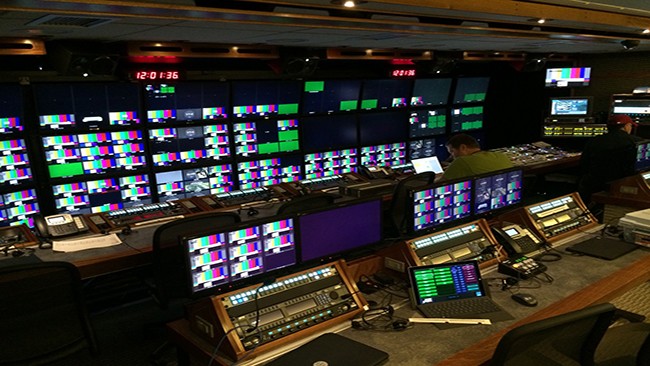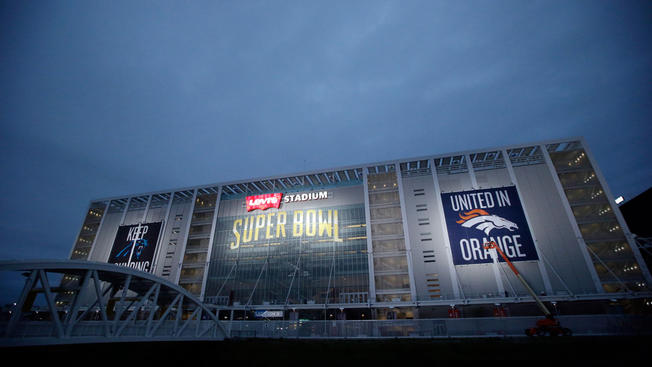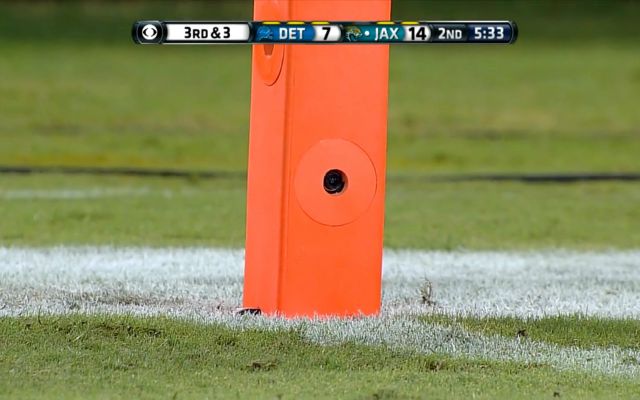Super Bowl 50: CBS Sports Promises Some Super Firsts
A one-of-a-kind camera, SSCBS’s Super Bowl debut, and enhanced power supply will mark the coverage
Story Highlights
Super Bowl 50 will offer a wealth of highlights on the field, and CBS Sports is making sure that it is ready to capture them all, thanks to new technologies like a one-of-a-kind Sony camera coupled with a one-of-a-kind Canon lens, the return of EyeVision 360, the Super Bowl debut of Pylon Cam, and NEP’s SSCBS production unit in its first appearance at the nation’s biggest sports spectacle. Oh, and there is also a plan to ensure that the compound (and broadcast booth) stay on-air.
Ken Aagaard, EVP, engineering, operations, and production services, CBS Sports, says that plan may not be sexy but it will become the new standard for big-time sports-production power needs.
“The good news is that we basically produced a Super Bowl-in-a-Box every Thursday night during the regular season out of SSCBS. So this is a really good situation for us,” he adds. “We planned when we knew that we were going to have a new truck to make sure that it wasn’t going to be new and out of the box for the Super Bowl.”
SSCBS has three double-expanding 53-ft. trailers centered on an A unit that has a 15- x 21-ft. production area housing a Grass Valley Kayenne Elite production switcher and a 15- x 18-ft. graphics area. NEP’s SS22 will serve as a videotape-release unit, and F&F Productions’ GTX-17 will handle pregame operations.
“It’s been huge across the board for the equipment, people, and workflows to be able to work in SSCBS all season,” says Aagaard. “In the past Super Bowls, we would drop a ton of equipment and technologies on the production people, who were not used to using them, and it was on the biggest game of the year.”
The New Stuff
A number of enhancements will highlight Super Bowl 50 coverage, but one addition to the production-equipment lineup will be of special interest to all sports-production professionals: a Sony 8X 4K camera that is so new it doesn’t have a complete model number yet (it is part of Sony’s 4000 series).
“We had been talking to Sony about it all season, and we tested it on a divisional playoff game but then used it on the AFC Championship game, and it was unbelievable,” says Aagaard. “It’s going to change the way we do a lot of sports productions.”
The advantage of the system (coupled with a new Canon UHD lens) became apparent during a play in the AFC Championship game when Denver Broncos quarterback Peyton Manning fell to the ground and was nearly touched by a New England Patriots defender.
“The question was whether the lineman touched him. The replay was really tight and zoomed in, and you could see that he missed touching Peyton,” Aagaard explains. “And, with 4K and 8X recording speed, there is no motion blur. I cannot thank Sony enough for letting us use the system.”
At Super Bowl 50, that camera will be located on the reverse-sideline cart and will be one of 70 cameras covering the game and 100 total, counting the cameras at the pregame set in Super Bowl City (at Market Street in San Francisco, 43 miles from the stadium), three sets at Levi’s Stadium, and a blimp also at Super Bowl City.
Besides the new Sony camera and the Canon lens, the most high-profile technology at the game is the EyeVision 360 from Replay Technologies, which, this year, features 36 new and improved JAI 5K camera systems. According to Aagaard, the 5K cameras have better rendering and resolution than previous EyeVision 360 versions, and, he notes, the production team can even drop in a vertical transparent first-and-10 line so that viewers will be able to see whether the ball broke the plane.
“The cameras are placed more tightly in the red zones, so anything between the 25-yard lines won’t be as dramatic,” he adds. “We’re really excited about it and how it will work out and be cut into the show.”
CBS has been testing out the system during the past season, including at AT&T Stadium in North Texas on Thanksgiving Day. The CBS team also had a chance to try it out at Levi’s Stadium when the San Francisco 49ers hosted the Cincinnati Bengals on Dec. 20.
“It’s much more advanced than it was in Dallas,” says Aagaard, noting, “The rendering quality allows us to zoom.”
For the big game, four Admiral Video Pylon Cam systems will be used in each end zone, providing eight additional camera angles. New microphones will be in the Pylon Cams, providing extra punch to end-zone audio.
Also new will be a fresh graphics look as well as a new CBS Sports logo. Embracing an entirely new graphic look takes time as well as rehearsals, and the CBS Sports production team has spent the past month rehearsing, beginning with running the new animations and graphics in the background during the Divisional Playoff round.
“It’s a whole new look for us that fits in nicely and is a smart, simple design,” Aagaard says.
Plenty of Juice
The truck compound and other CBS facilities onsite at Levi’s Stadium will also be running off a new concept in primary- and backup-power-system design created by the CBS team in conjunction with Filmwerks.
“We are running all of our trucks, a lot of our cameras inside the stadium, and the pregame Plaza Set off of 144 batteries that are continually charged by shore power,” Aagaard explains. “If anything happens to the shore power, it takes 1.5 minutes for the diesel generators to turn on and start powering the batteries. We feel that we are in very good shape, and the announce booth is also backed up 20 different ways. It’s an elegant system, and we will have it at every big event.”
 Making sure the SSCBS production units stay on-air is obviously important, but even more so with the new generation of production units, which are basically the equivalent of supercomputers on wheels. If power is lost, getting them back up and running can be trickier than in the old days.
Making sure the SSCBS production units stay on-air is obviously important, but even more so with the new generation of production units, which are basically the equivalent of supercomputers on wheels. If power is lost, getting them back up and running can be trickier than in the old days.
Besides the engineering and video area in the A unit, the B unit houses the main audio room (measuring 15 x 8 ft.) and the audio-submix room (10 x 10 ft.), each with three operator positions. Key equipment in the main audio room is a Calrec Apollo console with 72 faders and Bluefin2 signal processing to provide 1,020 channels; in the submix room, a Calrec Artemis console with Bluefin and 64 faders. Day Sequerra upmix, downmix, loudness meter, and stereo-synthesizer gear is also in place alongside B&W surround-sound speakers and an RTW digital audio scope. A mix of Shure, Sennheiser, Sony, and Audio-Technica mics are also aboard.
The B unit also poses one of the major challenges facing production-unit designers and engineers: how to handle heat load from systems that are increasingly the equivalent of massive computer-server rooms. And the 80,000-lb. legal weight limit for a production unit always requires a delicate balance. For example, adding air-conditioning to deal with a heat problem means more AC weight, which means that some of the heat-generating gear needs to be removed to meet the weight restriction. But that, in turn, lowers the need for air-conditioning because there is less heat-generating equipment in the truck.
The C unit houses a 15- x 27-ft. replay area, which will have 18 EVS XT3 operators during the game (eight more will be in SS22A and six more in GTX-17). Flex space within the trailer allows personnel to handle transmission, editing, or virtual-graphics and other systems.
And SSCBS also embraces all-IP transport. Dante audio — using a combination of software, hardware, and network protocols to deliver uncompressed, multichannel, low-latency audio over a standard Ethernet network — and the ThinkLogical KVM system provide flexibility, delivering uncompressed, high-resolution video, audio, and peripheral data on a single stream over a single duplex fiber or single CATx cable. SSCBS is also the first mobile unit to use the RTS Omneo intercom, allowing the entire intercom system to be networked — even from remote towers, booths, or other trailers — without the need for DT12 cabling.



